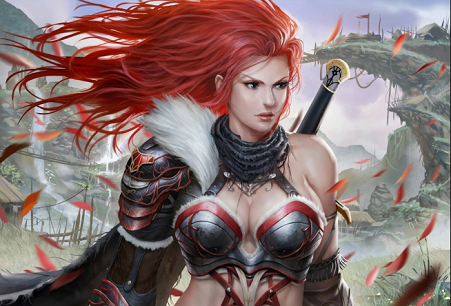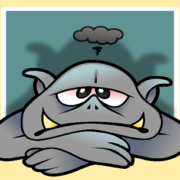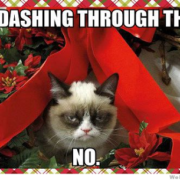Young Adult Fantasy: 10 Tips for Writing What’s HOT!
Please welcome Young Adult Fantasy Fiction author, Lizzy Ford, who has graciously written this guest post for WritingNovelsThatSell.com. In this column, Lizzy is sharing her Top 10 Tips for Writing What's Hot in Young Adult Fantasy Fiction. Lizzy released 20 books in two years. Whew! Let's learn what this Writing Whirlwind has to say about writing and promoting YA Fantasy . . .
Young Adult Fantasy: 10 Tips for Writing What's HOT!
By Lizzy Ford
Young Adult fantasy fiction is hot right now – no one will disagree with this statement! As the author of the unexpectedly popular Rhyn Trilogy, I’ve been asked a few times: what’s the secret to tapping into this insane market? There are a few secrets, some of which deal with the YA audience and some of which are geared towards general marketing.
1. Don’t write about vampires.
There are thousands of writers trying to be the next Stephanie Myers. Vampires are in every other book, on the television, in movies. Rather than hopping on this bandwagon, write something different. There is less competition with the thousands of authors writing vampire books and second, your book is more likely to be remembered by the readers. Readers of Twilight and Harry Potter want to find the next great thing. Show them through original ideas and characters.
2. Write a series.
 The hottest selling YA books are series. The series model gives you, the author, more time to find and connect with your YA audience while giving readers a reason to reach out to you about your next fantasy fiction book.
The hottest selling YA books are series. The series model gives you, the author, more time to find and connect with your YA audience while giving readers a reason to reach out to you about your next fantasy fiction book.
3. Go to your readers.
No matter how good your book is, if your target audience can’t find it, you’re out of luck. Unlike more niche genres, the market for YA fantasy is identifiable – and hungry. But that doesn’t mean your YA audience will come to you as soon as you release a book. You must go to them.
This means your book must be everywhere. Amazon, Barnes and Noble, and Apple are the essential places. Use an aggregator like Smashwords to upload to other stores (Kobo, Sony, etc.) Visit places like Goodreads, Wattpad, and Fictionpress and upload sample chapters. Join Pinterest and upload your Young Adult fantasy fiction book covers … find anywhere your readers are likely to be and establish a presence.
4. YA readers are tech savvy.
The YA audience is slightly different than say, the mystery crowd, because so much of the YA audience appears to be using technology – rather than traditional brick-and-mortar bookstores – to find and choose their books. They read their books on their ereaders, their phones, their computers. Make sure your book’s formatting will still read well no matter what device is used to read it.
5. Exploit under-served markets.
Right now, Apple is a somewhat neglected store. A lot of authors ditched Apple and BN to participate in Amazon’s Select program. In general, Apple’s reading demographic is younger than that of Amazon and BN. My sales quadrupled at Apple after everyone left, because there was less competition in the YA market. People will argue that Amazon is the monster on the block, and this is true, but there’s nothing preventing you from building a following at every store you can. My Amazon royalties make up about 60% of my writing income.
6. Free ebooks: increase exposure and build your core fan base.
It’s hard to get noticed and even harder to make a name for yourself when you’re competing with thousands of others. One way to manage this is to offer your book for free for a limited time through online bookstores OR to people who sign up for your mailing list. Giveaways on Goodreads, Librarything or on your own website are also very effective.
I’ll caveat this by saying: free works best for the first book in a series. If you have one Young Adult fantasy fiction novel out and nothing else out, you may want to wait to try this until you have a second or third book out as well. Or, you can write a short story/novelette associated to the series and offer it for free instead of your book(s).
7. To undermine the competition, remain flexible about pricing.
Reality check: if just starting out, you won’t make enough to live on anytime soon. Also know that the YA market is flooded with books that are cheaper than say, the adult fantasy market. Price the first book in your series low enough to pull in as many readers as you can then price the subsequent books higher. People will tell you that you’re devaluing your book and – heaven forbid! – someone might assume you’re an indie! The people who care about these things: not your audience. The people delighted to find a good for cheap: your audience.
8. Word-of-mouth sells books.
Build your marketing plan around this. You want to generate positive buzz about you and your books online. This is as easy as running giveaways, participating in blog hops, inviting readers to provide feedback to maintaining an active social media presence. You want to interact with your audience and collect fans for your audience by appearing approachable. Sell yourself instead of books. People will buy your books because they like you.
To prevent getting sucked into social media oblivion, choose three that you’ll update daily. These should preferably be your website/blog and two of the social media platforms where your audience congregates. For me, this is Facebook and Twitter.
Then identify the second tier platforms you’ll check 3-4 times a week; the third tier that you’ll check 1-2 times a week; and finally, tier four, the platforms where you feel you should probably be but won’t have time for. Take the platforms identified in tiers 2-4 and automate your website’s RSS feeds to them so you still have content posted, even if you don’t have the time to visit often.
9. Presentation matters.
To a new potential customer, the only thing that will differentiate your book from all the others in your genre is the packaging. Covers, blurb, editing. You need a professional looking cover, a succinct but strong blurb and sample chapters that don’t read like a third grade essay. YA book covers can be placed into one of two categories: bright and colorful or dark and moody.
10. Write more books.
The single best way to promote yourself is to show you’re not a one-hit wonder. Give readers a reason to come back to you again and again by continuing to produce well-packaged books.
 Lizzy Ford is the self-publishing phenom, author of the sweet paranormal romance series: "Rhyn Trilogy" and "War of Gods" series; and the young adult fantasy trilogy, “The Foretold.”
Lizzy Ford is the self-publishing phenom, author of the sweet paranormal romance series: "Rhyn Trilogy" and "War of Gods" series; and the young adult fantasy trilogy, “The Foretold.”
Lizzy's books have reached the bestseller lists on both Amazon US and Amazon UK in multiple categories. Widely considered a freak of nature by her contemporaries for her ability to write and publish a new book every 30-45 days, Lizzy attributes her success to a team that consists of her editor, graphics artist, I.T. Sherpa, and her rabid readers.
Lizzy’s books can be found on every major e-reader library (including Amazon, Barnes and Noble, iBooks, Kobo, Sony and Smashwords.) For more news about Lizzy Ford and her upcoming Young Adult Fantasy Fiction, visit her website, Guerrilla Wordfare or follow her on Twitter (@LizzyFord2010.)









